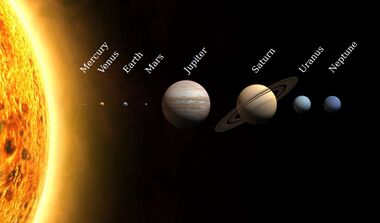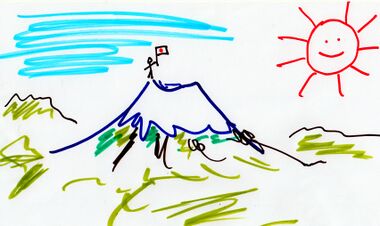⽇
X2F47 ⽇ is Unicode character number 12103, KanjiRadical, Nichi.
⽇ X2F47 can be pronounced nichi and may mean sun or day.
In Wikipedia numeration, X2F47 ⽇ is denoted with term Radical 72 [1]
X2F47 ⽇ is easy to confuse with other Unicode characters; in particular, with X2F48 ⽈ [2]. Pictures of these two characters are compared in the top figure.
Nichi
The computer support of Japanese characters is far from the perfection. Up to year 2021, there is no united standard for the default font, that would allow each character to look the same at various computers, but clearly distinguishable from other characters.
In particular, the fault takes place with character ⽇.
⽇ X2F47 is easy to confuse with other Nichi;
all the four Nichi have similar graphic representation:
⽇ X2F47 [3], KanjiRadical
⽈ X2F48 [4], KanjiRadical
日 X65E5 [5], KanjiLiberal
曰 X66F0 [6], KanjiLiberal
Even a native Japanese speaker, looking at characters ⽇ ⽈ 日 曰,
is unlikely to answer:
Which or them is X2F47 [3]?
Which or them is X2F48 [4]?
Which or them is X65E5 [5]?
Which or them is X66F0 [6]?
In such a case, the correct specification of the character is "X2F47 ⽇ or X2F48 ⽈ or X65E5 日 or X66F0 曰"
Term Nichi is defined as short substitute of this long and complicated construction.
In order to resolve the confusions, some programming is necessary. The Utf8 encoding of each of the Nichi characters can be calculated by the PHP program du.t with command
php du.t ⽇⽈日曰
The output is
⽇⽈日曰
The array has 12 bytes; here is its splitting:
e2 bd 87 e2 bd 88 e6 97 a5 e6 9b b0
array(4) {
[0]=>
string(3) "⽇"
[1]=>
string(3) "⽈"
[2]=>
string(3) "日"
[3]=>
string(3) "曰"
}
Unicode character number 12103 id est, X2F47
Picture: ⽇ ; uses 3 bytes. These bytes are:
xE2 xBD x87 in the hexadecimal representation and
226 189 135 in the decimal representation
Unicode character number 12104 id est, X2F48
Picture: ⽈ ; uses 3 bytes. These bytes are:
xE2 xBD x88 in the hexadecimal representation and
226 189 136 in the decimal representation
Unicode character number 26085 id est, X65E5
Picture: 日 ; uses 3 bytes. These bytes are:
xE6 x97 xA5 in the hexadecimal representation and
230 151 165 in the decimal representation
Unicode character number 26352 id est, X66F0
Picture: 曰 ; uses 3 bytes. These bytes are:
xE6 x9B xB0 in the hexadecimal representation and
230 155 176 in the decimal representation
The same can be done with PHP program du.t; command
php du.t ⽇⽈日曰
provides the similar output, confirming, that the confusion mentioned refers mainly to the Human interpretation of the graphical information. The software, by itself, is not confused with characters ⽇,⽈,日,曰 (as it happens with characters of set KanjiConfudal).
Wictionary
Character X2F47 ⽇ is mentioned at Japanese Wictionary https://ja.wiktionary.org/wiki/⽇ [7]
The basic pronunciations of 日(ニチ、ひ、日偏(ひへん、にちへん))
and the meaning (sun) are suggested.
In year 2021, the English version https://en.wiktionary.org/w/index.php?title=⽇&redirect=no
[8] redirects to X65E5 日
[9],
silently assuming, that
X2F47 ⽇ and X65E5 日 have the same meaning.
Definitions are suggested:
日 (astronomy) Sun
daytime; time between sunrise and sunset
日班 ― rìbān ― day shift
Antonyms: 夜 (yè), 夜間/夜间 (yèjiān), 夜晚 (yèwǎn), 晚上 (wǎnshang)
day; twenty-four hours
everyday; daily; day-to-day
day of the month
三月四日 ― sān yuè sì rì ― March 4
Synonym: 號/号 (hào)
some day; some other time
former times; previous times; the past
time; period; age
Classifier for days.
Short for 日本 (Rìběn, “Japan; Japanese; Nippo-”):
中日詞典 / 中日词典 ― zhōngrì cídiǎn ― Chinese-Japanese dictionary
(Beijing, Jiaoliao Mandarin, Southwestern Mandarin, Central Plains Mandarin, Jianghuai Mandarin, Lanyin Mandarin, dialectal Jin, dialectal Wu, dialectal Xiang, vulgar, often in abuses) to fuck; to have sexual intercourse with quotations ▼
狗日 ― gǒurì ― fucking
alt. forms: 入, 㒲, 肏
† Alternative form of 二 (èr, “two”).
(obsolete) Short for 日斯巴尼亞/日斯巴尼亚 (Rìsībāníyà, “Spain”).
(~母) (Chinese linguistics) the Middle Chinese initial of 日 (MC ȵiɪt̚)
Synonyms are suggested:
show ▼Dialectal synonyms of 太陽 (“sun”) [map]
show ▼Dialectal synonyms of 白天 (“daytime”) [map]
show ▼Dialectal synonyms of 天 (“day (24 hours)”) [map]
show ▼Dialectal synonyms of 肏 (“to fuck; to have sex with”) [map]
Examples
https://translate.google.com/?sl=ja&tl=en&text=⽇よう⽇ ⽇よう⽇ Sunday (⽇よう⽇)
https://translate.google.com/?sl=ja&tl=en&text=⽇曜⽇ ⽇曜⽇ Sunday (⽇曜⽇)
https://kanjialive.com/214-traditional-kanji-radicals/ Kanji alive// A free study tool for reading and writing kanji .. The 214 traditional kanji radicals and their variants .. 4 ⽇ sun, day, time ひ ..
https://apu-textbook.com/item-list?categoryId=50812 ⽇本語/Japanese languageCATEGORY (2021). The first three kanjis are: X2F47 ⽇ , X672C 本 , X8A9E 語 .
https://quizlet.com/553342443/japanese-kanji-flash-cards/ ⽇本 (The two kanjis are X2F47 ⽇, X672C 本 )(2021)
Gallery
Ignorance
Many manuals of Japanese Kanjis ignore confusion of character ⽇ with 3 other Nichi kanjis.
Various sites, dedicated to Japanese Kanji (including Jisho and Nihongomaster) do not explain meaning of some of the Nichi characters, ignore the similarity of the Nichi characters.
Some sites mention the semihance of ⽇ with other characters [10][11].
The abuse of encoding, as well as the unwanted misprints (some unusual, unexpected kanji with similar picture) make serious problems in the handling of data and processing of texts, in particular, at the searching and the replacement. The revealing of the encoding by program du.t helps to detect, recognize the errors and to correct them.
References
- ↑ 1.0 1.1 https://en.wikipedia.org/wiki/Radical_72 Radical 72 .. Radical 72 (U+2F47) .. 日 (U+65E5) "sun, day".. Radical 72 or radical sun (日部) meaning "sun" or "day" is one of the 34 Kangxi radicals (214 radicals in total) composed of 4 strokes.
- ↑ 2.0 2.1 https://en.wikipedia.org/wiki/Radical_73 Radical 73 Radical 73 (U+2F48) .. 曰 (U+66F0) "say".. Radical 73 or radical say (曰部) meaning "say" is one of the 34 Kangxi radicals (214 radicals in total) composed of 4 strokes.
- ↑ 3.0 3.1 https://util.unicode.org/UnicodeJsps/character.jsp?a=2F47 ⽇ 2F47 KANGXI RADICAL SUN Han Script id: allowed confuse: 日
- ↑ 4.0 4.1 https://util.unicode.org/UnicodeJsps/character.jsp?a=2F48 ⽈ 2F48 KANGXI RADICAL SAY Han Script id: allowed confuse: 曰
- ↑ 5.0 5.1 https://util.unicode.org/UnicodeJsps/character.jsp?a=65E5 日 65E5 CJK UNIFIED IDEOGRAPH-65E5 Han Script id: restricted confuse: ⽇
- ↑ 6.0 6.1 https://util.unicode.org/UnicodeJsps/character.jsp?a=66F0 曰 66F0 CJK UNIFIED IDEOGRAPH-66F0 Han Script id: restricted confuse: ⽈
- ↑ https://ja.wiktionary.org/wiki/⽇ 日(ニチ、ひ、日偏(ひへん、にちへん)) 漢字の部首の一つ。「明」など偏である「⺜」の部分を指す名称。太陽や一日に関する意味の漢字を表し、日部を構成。常用漢字では四画。 参照[編集] Wiktionary:漢字索引 部首 日。..
- ↑ https://en.wiktionary.org/w/index.php?title=⽇&redirect=no \#REDIRECT 日
- ↑ https://en.wiktionary.org/wiki/日 See also: EI, El, 曰, 臼, 白, 冃, 티 and 𐌇 .. Translingual[edit] Stroke order 4 strokes Stroke order 日-order.gif Han character[edit] Commons-logo.svg See images of Radical 72 日 日 (radical 72, 日+0, 4 strokes, cangjie input 日 (A), four-corner 60100, composition ⿴囗一)
- ↑ https://www.kanshudo.com/search?q=⽇ 1 Japanese character found in '⽇' ⽇ sun × ⽇Animation / stroke order not available. ⽇ means 'sun' and is a variant of 日 Hyōgaiji (表外字) Strokes: 4 Usefulness: 8 Please log in to view mastery data. This kanji is not used in the most common form of any words. Visually identical to standard form in most fonts, but different Unicode code point.
- ↑ https://www.fileformat.info/info/unicode/char/2f47/index.htm Unicode Character 'KANGXI RADICAL SUN' (U+2F47) Share on PinboardShare on HackerNewsShare on TwitterShare on FacebookShare on Reddit previous character next character image of Unicode Character 'KANGXI RADICAL SUN' (U+2F47) Browser Test Page Outline (as SVG file) Fonts that support U+2F47 Unicode Data Name KANGXI RADICAL SUN Block Kangxi Radicals Category Symbol, Other [So] Combine 0 BIDI Other Neutrals [ON] Decomposition <compat> sun; day; daytime (U+65E5) Mirror N Approximations 65E5 Version Unicode 3.0.0 (September, 1999)





